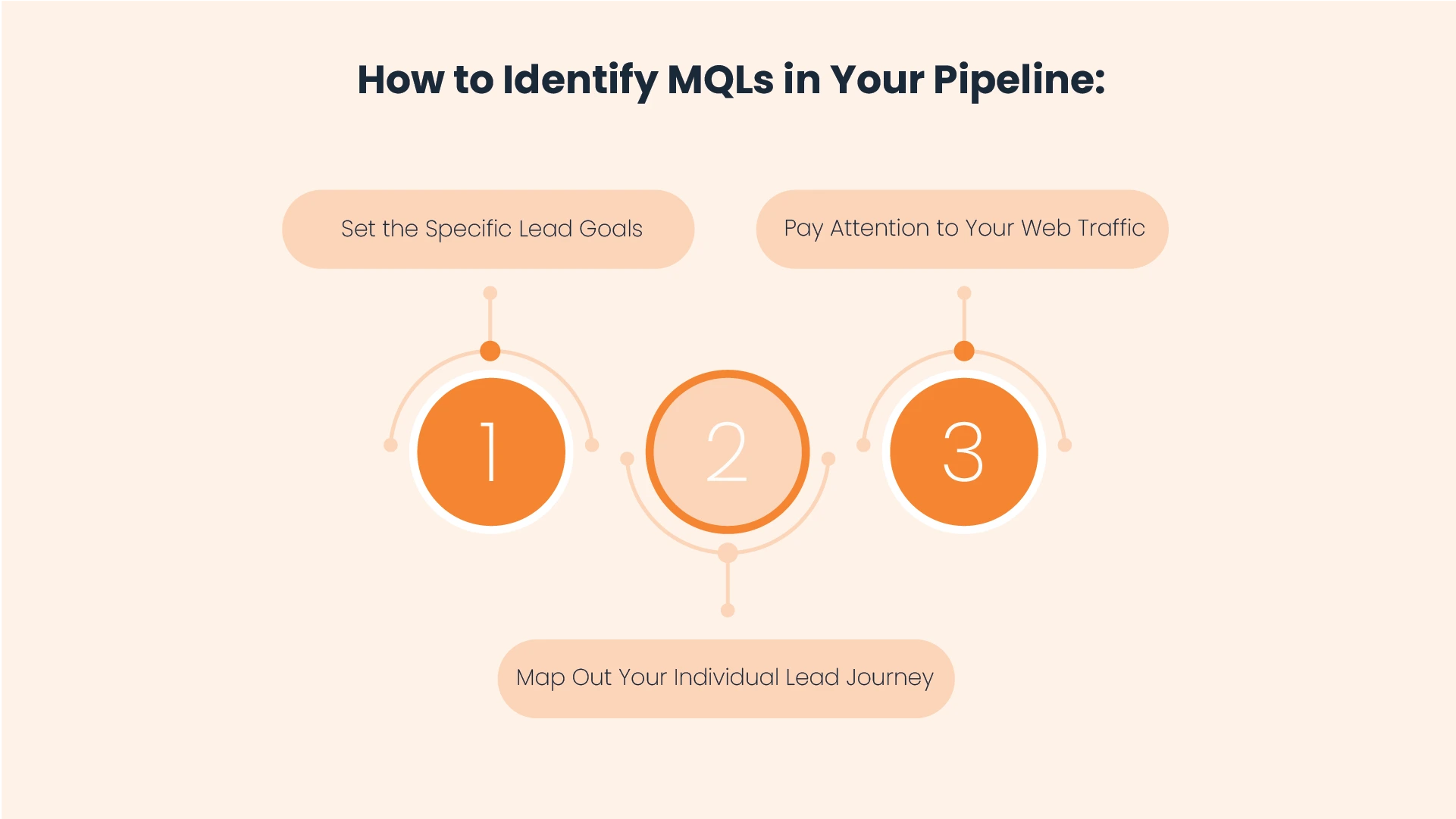
Marketing Qualified Leads play a vital role in sustaining a robust sales pipeline. These leads are potential customers who have expressed interest in your B2B product or service and align with your ideal customer profile.
Despite their importance, many B2B companies encounter difficulties in generating a sufficient number of MQLs. The lead-to-MQL conversion rate in the B2B SaaS industry stands at only 39%.
When companies fail to generate enough MQLs, their sales teams often pursue leads that are not yet ready to convert. This results in wasted resources and the potential loss of high-value prospects.
So, it is essential to enhance your MQL generation strategies by prioritizing lead quality over quantity. This way, you can populate your sales pipeline with leads that have a higher conversion rate, improve return on investment (ROI), and simplify the tasks for your sales team.
In this article, we will guide you through the process of identifying MQLs and provide ten actionable strategies to increase their generation. From leveraging content marketing to the implementation of chatbots, we offer comprehensive insights to enhance your lead generation efforts. Let’s get started!
How to Identify MQLs in Your Pipeline
Identifying MQLs in your pipeline requires a strategic approach. Let’s look at three effective ways to spot those high-potential leads that are more likely to convert.

1. Set the Specific Lead Goals
Setting specific lead goals helps you define what an MQL looks like for your business. This could include factors like company size, industry, budget, or specific actions taken on your website. A well-defined set of criteria provides your team with a clear roadmap for identifying high quality leads.
2. Pay Attention to Your Web Traffic
Your website serves as a rich source of information about potential MQLs. So, keep an eye on how visitors interact with your site. Are they downloading ebooks, reading blog posts, or checking case studies? These actions can indicate a higher level of interest. Use tools like Google Analytics or heat mapping software to track user behavior and identify the most engaged visitors.
3. Map Out Your Individual Lead Journey
By mapping the unique journeys of every converted lead, you can identify common patterns that indicate a lead’s qualification. Examine factors such as the number of touchpoints, kind of content consumed, and time spent at each stage of the funnel. This information assists in pinpointing where leads typically transition from being merely interested to genuinely qualified.
10 Tips to Generate More MQLs in 2024

1. Know Your MQLs
To effectively manage your Marketing Qualified Leads, it’s crucial to understand their industries, company sizes, and challenges. Collect and analyze relevant data to build a clear profile of your ideal MQLs.
Examine their behavioral patterns, identify the content they engage with most, and determine their preferred communication channels. This information allows you to tailor marketing efforts effectively to potential MQLs.
This process is not a one-time task; it requires continuous refinement of your MQL profile as more data becomes available. The clearer you define your ideal MQL, the higher the quality of leads you can generate.
2. Revisit Your Sales Funnel
Your sales funnel is a dynamic entity that requires regular evaluation. It is essential to thoroughly examine each stage of your funnel to identify where potential Marketing Qualified Leads may be slipping through.
For instance, your top-of-funnel content might be attracting a significant number of visitors, yet they may not be progressing to subsequent stages, or you might be losing qualified leads just before conversion.
To prevent the loss of potential MQLs, implement necessary adjustments such as creating new lead magnets, crafting tailored email sequences, or adding personalized touchpoints. The goal is to create a seamless journey for potential MQLs. An optimized funnel not only generates more MQLs but also facilitates their conversion into customers efficiently.
3. Content Creation for MQLs
Your potential MQLs are looking for quick answers, and that’s where chatbots and conversational marketing prove invaluable.
Begin by mapping out the buyer journey of your MQLs to understand the questions they have at each stage and the information they require to progress. Use these insights to develop content that meets their specific needs.
Different people consume content in different ways. So, create various content pieces including blog posts, case studies, ebooks, and podcasts.
Make sure you optimize your content for search engines by using relevant keywords that your MQLs search for. This ensures your content reaches the right audience at the right time.
4. Leverage Videos
Video marketing has become mandatory in B2B, as it simplifies complex concepts and fosters deeper engagement. Begin with explainer videos that highlight your product or service, which are particularly effective for attracting MQLs in the early stages of their buyer journey.
Subsequently, create demo videos or customer testimonials for leads further along the funnel. Additionally, produce live videos or webinars to facilitate real-time interaction with potential MQLs, addressing their questions directly.
Make sure your videos deliver substantial value to your audience by keeping them concise, informative, and aligned with the needs of your MQLs.
Most importantly, don’t forget to optimize your videos for search. Use relevant keywords in titles and descriptions, so your content is easily discoverable by your target audience.
5. Create Interactive Content
Static content grabs the attention of your MQLs but interactive content holds their attention and encourages active participation.
Create puzzles that help your potential MQLs understand their needs, build calculators that demonstrate the ROIs of your product, and develop interactive infographics that help in exploring data easily.
Interactive content is a goldmine of data. Each interaction gives you valuable insights into your MQLs’ preferences and pain points. Use this information to refine your targeting and personalize your follow-ups.
Don’t hesitate to experiment while creating interactive content. The more unique and engaging your interactive content is, the more likely it is to stand out and generate more MQLs.
6. Offer Multiple Touchpoints
Since your potential MQLs are spread across different channels, your marketing efforts should be equally diverse. Offering multiple touchpoints ensures you can capture and nurture MQLs effectively.
Some prospects might prefer email updates, while others engage more on social media. Some might love your webinars, while others get more value from your blog posts. The key is to be where your MQLs are.
Spread your presence across various channels like email, social media, content marketing, and events. This multi-channel approach helps you catch MQLs at different stages of their journey.
However, make sure your message is cohesive across all touchpoints. You need to create a seamless experience, not a disjointed one.
By offering multiple touchpoints, you’re not only increasing your chances of connecting with MQLs but you’re also giving them the flexibility to engage with you on their terms.
7. Strong Call-to-Action (CTA)
The perfect time for a compelling Call-to-Action (CTA) is when you have successfully engaged your MQLs. It’s the bridge between interest and action that guides your potential MQLs to take the next step.
Your CTA should be clear, impactful, and value-driven. Instead of a generic “Click Here,” try something more specific like “Get Your Free ROI Calculator” or “Book Your Personalized Demo Today”.
Place your CTAs strategically so they are visible without being overwhelming. Consider using contrasting colors to make them stand out while making sure that they still fit in with your overall design.
Use different CTAs at different stages of the buyer’s journey. For example, use “Download Our Free Guide” for early-stage MQLs and “Start Your Free Trial” for those closer to a decision.
Make sure you test and optimize your CTAs regularly. Small changes in wording, design, or placement can lead to big improvements in your MQL generation efforts.
8. Implement Chatbots and Conversational Marketing
Your potential MQLs want answers, and they want them now. That’s where chatbots and conversational marketing come in handy.
Chatbots can engage with your website visitors 24/7 by answering common questions and guiding them through your sales funnel. In simple words, they’re your always available sales reps.
Chatbots can also collect data and qualify your leads, so you can only focus on the most promising prospects.
Use chatbots to handle initial inquiries but make sure you provide an easy way for leads to connect with a real person when needed.
9. Account-Based Marketing (ABM)
Account-Based Marketing (ABM) helps you focus on high-value accounts that are most likely to convert into MQLs and eventually customers.
With ABM, you can target specific decision-makers in a company. This allows you to tailor your content, messaging, and outreach to the unique needs and pain points of each account.
This hyper-personalization helps you in going beyond just using a prospect’s name in an email. It helps create custom content and experiences that speak directly to each account’s specific challenges and goals.
To get started with ABM, identify your ideal accounts and research them thoroughly. Use intent data to understand when these accounts are most likely to engage. Then, craft personalized campaigns that resonate with each account.
Account-Based Marketing, when done right, boosts your MQL generation and conversion rates significantly.
10. Implement Customer Data Platform (CDP)
Customer Data Platform (CDP) collects, unifies, and activates your customer data from various sources.
With CDP, you can create a 360-degree view of your customers. This means you’ll understand their behaviors, preferences, and interactions across all touchpoints. Imagine having all this information at your fingertips when crafting your MQL strategies!
A CDP helps you segment your audience more effectively. Also, you can create highly targeted campaigns based on specific customer attributes or behaviors.
Moreover, a CDP can help you predict which leads are most likely to become MQLs. By analyzing historical data, it can identify patterns and behaviors that indicate a lead’s potential to convert.
A Customer Data Platform is an investment that gets you a high ROI in your MQL generation efforts.
Action Plan for Effective MQL Generation
You’ve just explored 10 powerful tips to boost your MQL generation. But knowledge alone won’t fill your pipeline. Here’s your action plan:
Start by evaluating your current MQL generation process to identify any gaps. Then, prioritize the tips that align best with your immediate needs and select your top three. Begin the implementation by focusing on one tip at a time. Set realistic timelines and adhere to them strictly.
As you progress, track your results carefully to determine what’s working and what needs adjustment.
Remember that continuous improvement is key, so keep refining your approach as you go along.
Our blog
Latest blog posts
Tool and strategies modern teams need to help their companies grow.

Our definition of marketing success in B2B is evolving. For years, traditional metric...

Video has emerged as one of the most effective tools to cut through the noise and con...

The way B2B buyers research, engage, and decide has changed and so must the way marke...






